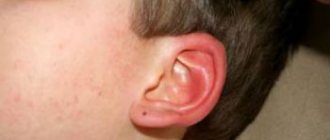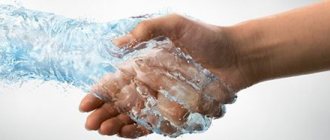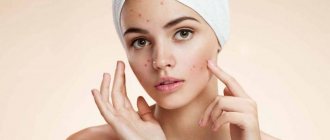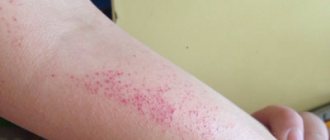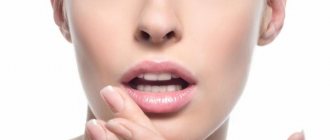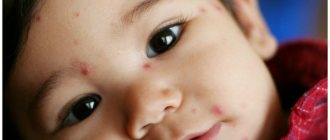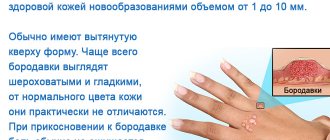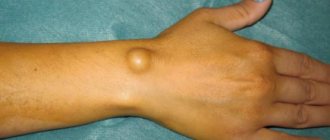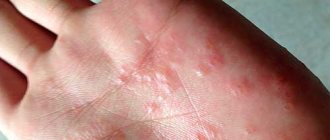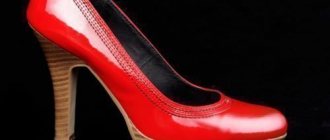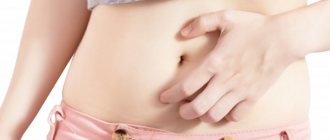What causes acne on dry skin?
Dry skin is not usually a serious condition, but it can become unsightly. It is usually caused by environmental factors such as:
- Hot/cold weather
- Low humidity
- Bathing in hot water
- Using harsh soaps and detergents
- Chemical irritants such as laundry detergent residue
While acne is usually associated with oily skin, it is also becoming more common in dry skin.
Those with dry skin are more prone to accumulation of:
- Dead skin cells
- Cosmetic products
- Dirt and bacteria
The accumulation of such particles on the skin can increase the risk of developing acne. Hormonal imbalance and clogged hair follicles with dry skin flakes are also common causes of acne. Dry skin disrupts the skin barrier, making it more prone to inflammation and acne (1).
Below are some scientifically proven ways to get rid of acne on dry skin with home remedies.
How to completely get rid of red pimples
Many people are interested in how to get rid of red pimples.
First of all, it is necessary to ensure deep cleansing of the skin.
This procedure involves performing the following steps:
- Steam the skin. This must be done over a container of hot water. The procedure should last 7-10 minutes.
- Perform mechanical cleaning. To do this, you should use peeling or scrub.
- Apply a mask or cream. It is best to choose cleansing and nourishing products.
On the face
If acne appears frequently on your face, you should consult a doctor.
The cosmetologist will select an effective
treatment
that will help get rid of the problem forever.
Special procedures will help you deal with acne in a salon - chemical or laser peeling, ozone therapy, ultrasonic facial cleansing.
At home, various ointments are usually used. However, such drugs can only be used as prescribed by a specialist.
The most effective agents include zinerite, curiosin, and differin.
You can also use zinc, heparin or sulfur ointment.
You can also use folk remedies at home to help cope with small red pimples. These include lotions made from decoctions of medicinal plants - sage, chamomile, nettle, burdock.
On the nose
To cope with acne on the nose, you should also consult a cosmetologist. The specialist will select therapy depending on the clinical picture and individual characteristics of the patient.
Special ointments for acne - skinoren and zinerit - are highly effective. They should be used locally, treating the affected areas of the dermis twice a day. This treatment requires 10 weeks.
In a salon setting, you can resort to effective cosmetic procedures:
- ozone therapy
– involves treating affected areas with ozonized distilled water or injecting an ozone mixture; - facial cleansing
– is a mechanical or hardware elimination of rashes; - peeling
– involves smoothing the epidermis, helps cope with scars and post-acne; - mesotherapy
- involves the subcutaneous administration of drugs, which narrows the pores and prevents the appearance of rashes; - cryotherapy
– involves treating inflamed areas with liquid nitrogen.
Tips for preventing acne on dry skin
- Choose the right products:
- Use non-foaming cleansers as they are less drying to the skin.
- If you are taking acne treatment, use non-medicated cleansers.
- Choose a non-comedogenic moisturizer that treats dry skin without clogging your pores.
- Avoid using skin care products that contain harsh and drying ingredients such as alcohol, menthol and eucalyptus.
- Do not use comedogenic cosmetics.
- Don't wash more than twice a day: Over-washing your face can strip your skin's natural oils. To avoid this, use a moisturizing cleanser to maintain your skin's moisture levels.
- Moisturize regularly: Moisturize your skin daily to prevent it from drying out. You can use moisturizers designed for sensitive skin as they are gentle but effective.
- Avoid using harsh scrubs : Harsh scrubs can create micro-tears on the skin's surface, weakening the skin's barrier and making your skin more prone to dryness.
- Always wear sunscreen: Wearing sunscreen daily prevents sun damage to your skin. It also helps reduce redness caused by acne.
- Don't exfoliate: Exfoliating can strip your skin's natural oils and make dryness worse.
- Exercise regularly: There is a direct link between psychological stress and acne severity (18). Working out and practicing yoga regularly puts stress on the body and mind, which can reduce the severity of acne.
- Eat a healthy and balanced diet: avoid processed cheese and dairy products. Drink plenty of water to help keep your skin hydrated.
Proper skin care and a healthy lifestyle will help you easily deal with acne on dry skin. However, if your condition does not improve despite trying the remedies described above, it is best to see a doctor as soon as possible to avoid scarring.
Do you have any hacks to get rid of acne on dry skin? Share them with us in the comments section below.
22 sources
Moisturizers for Acne, Journal of Clinical and Aesthetic Dermatology 1 https://www.ncbi.nlm.nih.gov/pmc/articles/PMC4025519/ Biochemical studies on a new antioxidant from lemon oil and its biotechnological application in cosmetic dermatology, experimental and clinical studies drugs, US National Library of Medicine 2 https://www.ncbi.nlm.nih.gov/pubmed/10568210 Vitamin C in dermatology, Online Journal of Indian Dermatology 3 https://www.ncbi.nlm.nih.gov/ pmc/articles/PMC3673383/ Medicinal properties of neem leaves: a review, Current Medicinal Chemistry. Anticancer Agents, US National Library of Medicine 4 https://www.ncbi.nlm.nih.gov/pubmed/15777222 Medicinals, Neem: A Tree for Global Problems, National Center for Biotechnology Information, US National Library of Medicine 5 https://www .ncbi.nlm.nih.gov/books/NBK234637/ Topical application of neem leaves prevents wrinkle formation in UV-exposed hairless mice, Journal of Photochemistry and Photobiology, ResearchGate. 6 https://www.researchgate.net/publication/315754902_Topical_application_of_neem_leaves_prevents_wrinkles_formation_in_UVB-exposed_hairless_mice Honey in Dermatology and Skin Care: A Review, Journal of Cosmetic Dermatology, US National Library of Medicine 7 https://www.ncbi.nlm.nih.gov/pubmed /24305429 Honey: A Therapeutic Agent for Skin Diseases, Central Asian Journal of Global Health, US National Library of Medicine 8 https://www.ncbi.nlm.nih.gov/pmc/articles/PMC5661189/ Effect of turmeric (Curcuma longa) on skin health: Systematic Review of Clinical Evidence, Herbal Medicine Research, US National Library of Medicine 9 https://www.ncbi.nlm.nih.gov/pubmed/27213821 Effect of topical Aloe vera gel combined with tretinoin in the treatment of mild to moderate acne vulgaris 10 https:/ /www.ncbi.nlm.nih.gov/pubmed/23336746 Treatments for acne, molecules, US National Library of Medicine 11 https://www.ncbi.nlm.nih.gov/pmc/articles/PMC6273829/ Nutritional value and benefits for health from orange peel, Pharma Research Library. 12 https://www.pharmaresearchlibrary.com/nutritional-and-health-benefits-of-orange-peel/ Tomato-A Natural Medicine and its Health Benefits, Journal of Pharmacognosy and Phytochemistry, PhytoJournal. 13 https://www.phytojournal.com/archives/2012/vol1issue1/PartA/3.pdf Review of the use of tea tree oil in dermatology, International Journal of Dermatology 14 https://www.ncbi.nlm.nih.gov/pubmed/ 22998411 Study of cucumber extract for skin rejuvenation, African Journal of Biotechnology 15 https://academicjournals.org/article/article1380726732_Akhtar%20et%20al.pdf Study of the antibacterial effect of garlic concentrate (Allium sativum) and garlic derivatives 16 https://www.ncbi. nlm.nih.gov/pmc/articles/PMC3147487/ Anti-inflammatory properties of potato glycoalkaloids 17 https://www.ncbi.nlm.nih.gov/pubmed/23454444 Effect of psychological stress on acne, Acta Dermatovenerologica Croatica 18 https://www. ncbi.nlm.nih.gov/pubmed/28871928 “Why topical retinoids are the mainstay of acne therapy” Dermatology and Therapeutics 19 https://www.ncbi.nlm.nih.gov/pmc/articles/PMC5574737/ Clinical efficacy and safety of benzoyl peroxide for acne vulgaris: a comparison between Japanese and Western patients, The Journal of Dermatology 20 https://www.ncbi.nlm.nih.gov/pmc/articles/PMC5697687/ Clinical and dermoscopic evaluation of combined (peeling acid 20% and azelaic acid 20% ) and trichloroacetic acid 25% chemical peel for acne: RCT, Journal of Dermatology Treatment 21 https://www.ncbi.nlm.nih.gov/pubmed/29862871 Dapsone in Dermatology and Beyond, Dermatology Research Archives 22 https:/ /www.ncbi.nlm.nih.gov/pmc/articles/PMC3927068/
Mask recipes as a remedy for red acne
You can help with salon products, especially under the supervision and supervision of a cosmetologist, at home, how to help with your own hands? It’s not difficult, you can gradually remove small red pimples on your face simply by paying attention to your face and caring for it. You need to do this regularly, make it a habit to wipe your face with disinfectant lotion every day, and also use anti-inflammatory masks for pimples in combination with the main treatment. What will help best are cosmetic clay masks for red acne:
Black clay for any skin type:
- mix two tablespoons of black clay powder, with a strong decoction of mint and string until creamy.
Green clay for oily skin:
- mix green and white clay, taking one spoon each, and dilute it with mineral water without gases, for softness, drop 4-6 drops of essential oil and grape seeds into the mixture.
White clay for sensitive skin:
- Mix two tablespoons of white clay with a strong infusion of chamomile until thick.
Blue clay for dry skin:
- mix a couple of tablespoons of blue clay with bodyaga powder, and add water to make a thick cream mousse.
And now masks and lotions made from foods, vegetables and other ingredients available to everyone in a store or pharmacy:
Calendula lotion:
- take dried calendula flowers (a couple of teaspoons) and pour two glasses of boiling water, preferably in a thermos, and let it sit for an hour or more. Strain the finished infusion and wipe your face with it three times a day.
Soda lotions:
- dilute a couple of tablespoons of baking soda in water so that you get a thick mixture like a mousse, then dip a cotton swab in it and apply it to the inflamed areas of the skin for 1 minute.
Green tea compresses:
- Brew strong green tea and let it brew well, then soak gauze in it and apply it to the entire surface of your face.
Potato juice for pimples:
- grate raw potatoes on a fine grater, squeeze out the juices from them, and use them to wipe your face 2-3 times a day.
Aloe lotion:
- An excellent remedy if red pimples appear on your face. Cut off a couple of the bottom leaves of the aloe plant and place them in the refrigerator for 3 days. After three days, chop them finely and squeeze out the juice. Wipe your face before going to bed without rinsing off at night.
Lemon masks for acne:
- cut ripe fresh lemon into thin slices and place them on those areas of the face where rashes and inflammation appear (hold on the face for no more than ten minutes).
Egg whites against acne:
- you need to beat three egg whites until foamy and, without other additives, apply it to your face for 10-15 minutes, carry out the procedure once every two days.
Honey mask:
- Heat the honey to a liquid consistency over steam and in this form cover your face with it for fifteen minutes, rinse with warm water.
Yes, these are all long-term procedures that should be carried out systematically and regularly to achieve results. How can they keep up with our modern high-speed rhythm of life? Everyone needs to know how to quickly remove red pimples and what to do with them. By resorting to camouflage with foundation creams in combination with powder, you can visually hide them, but do not solve the problem as such, remember this. Until you start solving the problem, it won’t detach itself from you and your face won’t clear itself.
Redheads or papules on the skin are quite common. This problem can occur not only in adolescence, but also in adults who have an unstable hormone balance and other problems. That is why the question of how to get rid of red pimples is very relevant.

